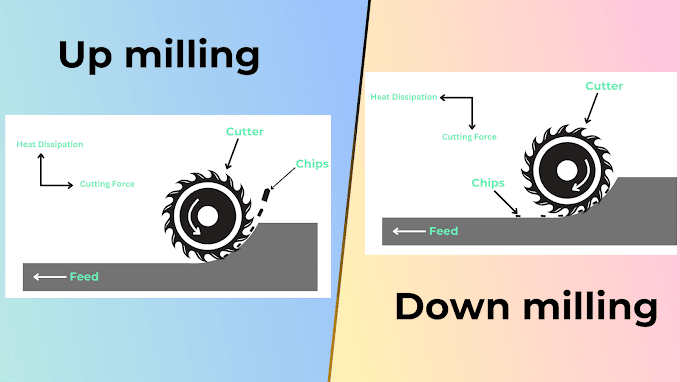Difference between Conventional and CNC Machine
What are the advantages of CNC machining over traditional methods? path? Is it better? What are the main benefits? If you compare CNC with traditional machining processes, the general approach to machining results is:
- Obtain and study the drawing
- Decide on the setup method (work holding)
- Select the most suitable machining method
- Select the cutting tools
- Establish speeds and feeds
- Machine the part
CNC machines can be used continuously for long intervals. | Conventional machines are difficult operate for several hours at a stretch. The operator has to continuously focus on the job at hand. |
CNC machines can produce products that are similar and accurate. | Resemblance of the products formed depends on the skill of the operator. Visible differences may occur. |
Less skilled/ trained person can operate the CNC machines. | Highly skilled operators are required to work on conventional machines. |
CNC machines can be updated by using improved software to drive the machines. | Chances of major improvement in the same conventional machines are very less. |
- What is the difference between manual and CNC machine?This simple approach is the same for both types of work. The main difference is how different files are entered. The feed rate of 10 inches per minute (10 inches per minute) is the same for manual or CNC applications, but the application process is different. The same goes for coolant; It can be activated by turning a knob, pressing a switch, or programming a special code. All these actions cause the coolant to spray out of the nozzle. In both methods, the user must have some knowledge.
- What is the difference between a manual lathe and CNC lathe?In traditional machining, the operator uses one or both hands to adjust the machine and move each cutting tool to perform the desired action. Manual machine tools, levers, handles, gears and dials, etc. It is designed to provide many features that help the machining process, such as: The operator repeats the same physical movement for each piece in the batch. But in this case the word "same" actually means "the same", not "the same". People cannot repeat every task at exactly the same time; This is the job of machines. People cannot always work at the same efficiency without rest. We all have good times and bad times. It is difficult to predict the results of this period when applying to machined parts
- What is the difference between manual and CNC machine?This simple approach is the same for both types of work. The main difference is how different files are entered. The feed rate of 10 inches per minute (10 inches per minute) is the same for manual or CNC applications, but the application process is different. The same goes for coolant; It can be activated by turning a knob, pressing a switch, or programming a special code. All these actions cause the coolant to spray out of the nozzle. In both methods, the user must have some knowledge.
- What is the difference between a manual lathe and CNC lathe?In traditional machining, the operator uses one or both hands to adjust the machine and move each cutting tool to perform the desired action. Manual machine tools, levers, handles, gears and dials, etc. It is designed to provide many features that help the machining process, such as: The operator repeats the same physical movement for each piece in the batch. But in this case the word "same" actually means "the same", not "the same". People cannot repeat every task at exactly the same time; This is the job of machines. People cannot always work at the same efficiency without rest. We all have good times and bad times. It is difficult to predict the results of this period when applying to machined parts
Read More about CNC machine:
Types of CNC machine: click here
Introduction to CNC machine: click here
advantages of CNC machine: click here
application of CNC machine: click here
Milling machines: click here

.png)





Thank you.